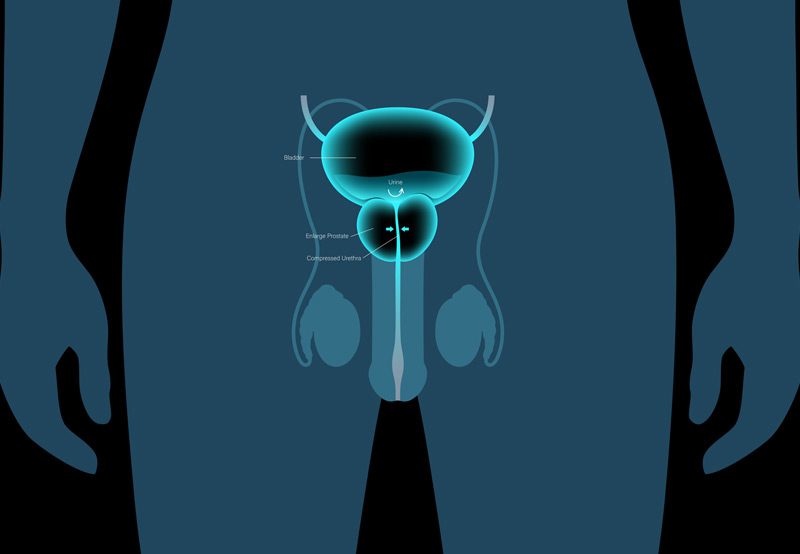

Benign Prostatic Hyperplasia (BPH) is a non-cancerous enlargement of the prostate gland that commonly affects men as they age. The prostate surrounds the urethra, and as it grows, it can put pressure on the urethral canal, leading to lower urinary tract symptoms (LUTS) that interfere with urination. While BPH is not life-threatening, the symptoms can significantly impact quality of life if left untreated.
Causes of BPH
The exact cause of BPH is not fully understood, but several factors are believed to contribute:
- Hormonal Changes: Age-related changes in testosterone and dihydrotestosterone (DHT) levels are thought to stimulate prostate growth.
- Aging: BPH is uncommon before age 40, but its prevalence increases with each decade of life.
- Family History: Men with a family history of BPH are more likely to develop the condition.
- Chronic Inflammation: Ongoing inflammation in the prostate may play a role in tissue growth.
These factors contribute to a gradual enlargement of the prostate, which can obstruct urinary flow.

Diagnosis
Diagnosing BPH involves a combination of clinical evaluation and diagnostic testing:
- Digital Rectal Exam (DRE): Allows the physician to assess the size and consistency of the prostate.
- Prostate-Specific Antigen (PSA) Test: Used to rule out prostate cancer.
- Urinary Flow Rate Measurement: Evaluates the strength of urine flow.
- Post-Void Residual (PVR): Measures how much urine remains in the bladder after urination.
- Cystoscopy or Ultrasound: May be used in complex or severe cases to visualize the urinary tract.
The severity of symptoms is typically assessed using the American Urological Association (AUA) symptom score.
Treatment Options
Treatment for BPH depends on the severity of symptoms and the degree of obstruction:
- Watchful Waiting: Mild symptoms may be monitored with regular checkups.
- Medications: Alpha-blockers help relax the bladder neck and prostate muscles; 5-alpha reductase inhibitors shrink the prostate over time.
- Minimally Invasive Therapies: Procedures such as UroLift®, Rezūm™, or laser therapy relieve obstruction with minimal downtime.
- Surgical Intervention: Transurethral resection of the prostate (TURP) or robotic simple prostatectomy may be required in advanced cases or when bladder damage is present.
Each treatment option is tailored to the patient’s symptoms, prostate size, and overall health.
Next Steps
If you’re experiencing urinary symptoms such as weak stream, frequent urination, urgency, or incomplete emptying, consult a urologist for evaluation. Early diagnosis can prevent complications such as urinary retention or bladder damage. Treatment plans are highly individualized, and effective management can significantly improve quality of life.
